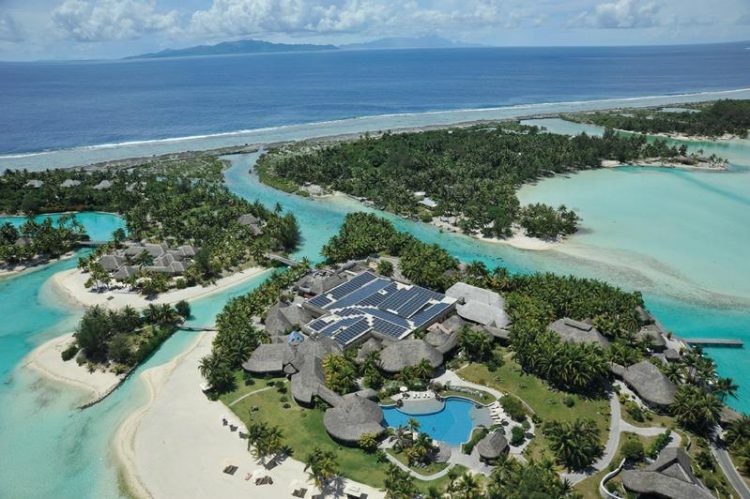Photovoltaic systems that adapt to the climate – subject of Austrian lead project research

The objective of the Infinity research project is to use photovoltaics efficiently in different climate zones. Fronius International
Technology minister Alois Stöger: “Research and development is an important strategic factor in expanding renewable energies and achieving global climate protection goals. As effective climate policy needs innovative energy technologies, Austrian solar expertise is in demand on the global market. We therefore trust the Infinity project will continue to expand this strong position.”
The demand for photovoltaic (PV) systems has increased over the past few years, not just in our part of the world. Future growth markets outside the temperate zones in particular, for example desert, (sub)tropical or alpine regions, also intend to use solar to a greater extent for generating electricity. However, there is currently only one standardised PV system for all climate zones. No options are available that can be adapted to different climate or grid conditions in specific applications.
Austrian lead project
Developing such application-specific options is the objective of the research in the Infinity project where five scientific partners and nine leading partners in industry have joined forces. The project is subsidised by the Climate and Energy Fund. Managing Director Theresia Vogel: “Projects such as Infinity help suppliers to manufacture more cost effectively and make affordable technologies available – and that worldwide.”
“What we want to achieve in the Austrian lead project is to create the basis for the next generation of PV components, systems and processes. Our research is therefore into adapting both the materials and the whole PV system to different climate conditions and special regional features. In our work, we also take such factors into account as extreme temperatures, sand and instable electrical grids,” says project manager Christina Hirschl from the research centre CTR Carinthian Tech Research.
“If we are to achieve the energy transition, we need smart PV systems that are long lasting, energy-efficient and also affordable. The project is also aimed at improving climate protection and making companies more competitive at an international level,” Hirschl adds.
ADAAPITVE SYSTEMS DELIVER HIGHER YIELD
The team of researchers will start off by conducting an in-depth error analysis to identify the mechanisms affecting how various materials, modules and inverters react in different climate zones both individually and as an overall system. They will then use the results gained to take a different approach to designing new, improved, climate-specific PV energy generation systems. “A special feature of the project is the holistic research method employed along the entire PV value chain – from the PV materials and components to module manufacture, PV system installation and maintenance.
The scientific findings will be used to develop further process, service and maintenance strategies. Our goal is to create new energy-efficient products and also new services,” Hirschl goes on to explain. Research is aimed at prolonging service life, reducing system costs and ultimately also yielding more electricity.
Lead scientist Michael Schwark from AIT adds: “The various inputs along the value chain will significantly improve the quality of the mathematical-physical models, enabling climate-related aging predictions to be given for all parts of a PV system. Apart from optimising the overall system, these models will also mean more accurate acceptance and maintenance recommendations for individual climate zones.”
The research work provides an important basis for developing competitive, innovative products, such as flexible materials and PV modules that can be adapted to defined climate conditions as required.
As a whole, it will give the Austrian and European photovoltaics industry the opportunity to secure a competitive edge on the global market in terms of quality and above all establish sustainable research structures with scientific experts.
PROJECT FACTS & FIGURES
TITLE: INFINITY – Climate sensitive long-time reliability of photovoltaics
LEAD MANAGEMEN: Research centre CTR Carinthian Tech Research AG
SCIENTIFIC MANAGEMENT: Austrian Institute of Technology (AIT)
INDUSTRIAL PARTNERS: ENcome Energy Performance, Fronius International, Infineon Technologies Austria, Isovoltaic, KIOTO Photovoltaics, Polytec PT, PVI, PVSV, Ulbrich of Austria
SCIENTIFIC PARTNERS: AIT Austrian Institute of Technology, CTR Carinthian Tech Research, Vienna University of Applied Sciences, OFI Research Centre for Chemistry and Technology, PCCL Polymer Competence Center Leoben
DURATION: 3 years starting on 1 November 2015
RESEARCH VOLUME: €5.5 million
This project will be subsidised by Austria’s Climate and Energy Fund and carried out as part of its energy research programme. Since it was set up in 2007, the Climate and Energy Fund has provided grants totalling €32.4 million in the field of application-oriented research into solar thermal energy (STE) and photovoltaics (PV) for 68 projects (36 PV and 32 STE). The projects focus on improving system efficiency, developing energy-efficient manufacturing processes, using new materials and increasing the service life of components.
http://www.ctr.at/en/newspressvideos/press-releases
https://www.klimafonds.gv.at/
Media Contact
All latest news from the category: Power and Electrical Engineering
This topic covers issues related to energy generation, conversion, transportation and consumption and how the industry is addressing the challenge of energy efficiency in general.
innovations-report provides in-depth and informative reports and articles on subjects ranging from wind energy, fuel cell technology, solar energy, geothermal energy, petroleum, gas, nuclear engineering, alternative energy and energy efficiency to fusion, hydrogen and superconductor technologies.
Newest articles

Properties of new materials for microchips
… can now be measured well. Reseachers of Delft University of Technology demonstrated measuring performance properties of ultrathin silicon membranes. Making ever smaller and more powerful chips requires new ultrathin…

Floating solar’s potential
… to support sustainable development by addressing climate, water, and energy goals holistically. A new study published this week in Nature Energy raises the potential for floating solar photovoltaics (FPV)…

Skyrmions move at record speeds
… a step towards the computing of the future. An international research team led by scientists from the CNRS1 has discovered that the magnetic nanobubbles2 known as skyrmions can be…





















